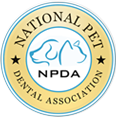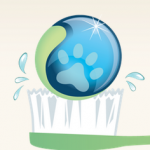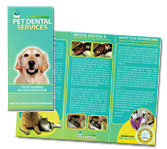“The services provided by Pet Dental Services have proven to be invaluable to our practice. Our clients appreciate the safety and convenience that non-anesthetic dentistry provides to their pets. Pet Dental Service’s staff is incredibly kind and patient with the pets in their care. Even some of our fearful patients are able to benefit from a full dental cleaning due to the gentle care provided by the PDS staff.”
Dental care for your pet
Did you know that your pet’s oral health is very similar to your own? Would you go months without brushing or years without visiting the dentist? According to the American Veterinary Medical Association (AVMA), 80% of dogs and 70% of cats have some form of dental disease by age 3! Many pet owners are unaware of the fact that dental disease can lead to painful oral infections, tooth loss, problems eating, and of course bad breath! There is also medical literature that confirms a correlation between oral disease and systemic diseases that can affect your pet’s vital organs, including the heart, liver, and kidneys.
The National Pet Dental Association (NPDA) strives to educate pet owners on dental disease and how to prevent it. Here are a few suggestions to help ensure your pet’s oral health.
What you can do at home
- It is important to become familiar with your pet’s oral cavity. Starting at an early age, you should touch and examine your pet’s mouth, looking for abnormal lesions or areas of pain.
- Oral rinsing and brushing reduces tartar and bacteria build-up. Make sure to only use pet safe toothpastes and rinses, as human products can be toxic for your pet.
- Offering your pet oral chews designed specifically for oral health is an easy and effective way to help reduce the build-up of tartar on the teeth. Always monitor your pet when using dental chews to avoid accidental choking.
What your veterinarian can do to help
- Your veterinarian should complete an oral examination during every wellness visit to assess your pet’s oral health status.
- They will determine if your pet requires a dental cleaning under general anesthesia or a non-anesthetic dental cleaning.
- Regular dental cleanings are important to keep your pet healthy and pain free.
- Dental x-rays are also recommended periodically to expose dental disease that may be lurking below the gum line.
Anesthetic dental cleanings are necessary when your pet is showing signs of advanced dental disease. Full mouth x-rays can be taken while your pet is under anesthesia to reveal any pathology below the gum line. A non-anesthetic dental procedure is a dental cleaning completed without anesthesia. The non-anesthetic approach is a great option for preventive care. However, not all pets are suitable candidates for this procedure, and your veterinarian will determine which is the best option for your pet based on their overall health condition.
Please be aware that dental cleanings are a medical procedure, and for the safety and health of your pet, they should always be performed in a veterinary hospital, under the direct supervision of licensed veterinarian. The risk of having your pet’s teeth cleaned outside of a veterinary hospital could be hazardous and even fatal for your pet.
For more information and to find a professional service provider, contact the National Pet Dental Association, www.npda.info or 1.866.561.6717.

 Dr. Melissa Byers
Lake Forest Animal Clinic
Lake Forest, CA
Dr. Melissa Byers
Lake Forest Animal Clinic
Lake Forest, CA







